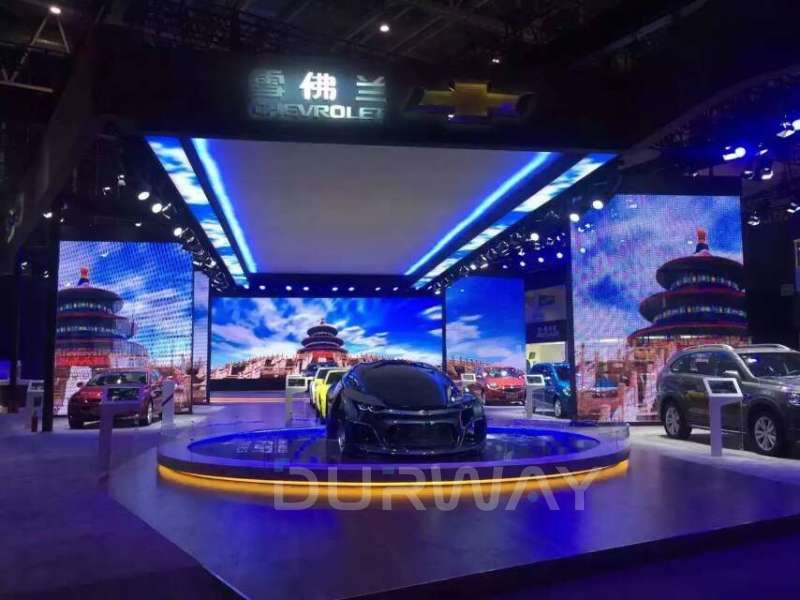Introduction
As architecture evolves to incorporate digital technology into built environments, architectural LED screens are becoming integral to modern design. Among them, acoustic LED screens stand out by combining visual display functionality with integrated sound transmission, offering not only aesthetic appeal but also immersive communication capability.
This article explores how acoustic LED screens enhance architectural spaces—bridging the gap between form and function. Whether you are an architect, interior designer, AV integrator, or real estate developer, understanding the architectural value of sound-permeable LED displays can help you deliver innovative, tech-forward spatial experiences.
What Are Architectural LED Screens?
Architectural LED screens are digital displays specifically designed to complement or be embedded within a building’s structure. Unlike standalone commercial displays, these screens are curated to match the spatial proportions, lighting, acoustics, and design language of an environment.
Acoustic LED screens take this concept further by offering perforated panels that allow sound to pass through, enabling designers to embed audio-visual content without compromising space, aesthetics, or sound quality.
1. Seamless Integration with Modern Interiors
In high-end architectural design, aesthetics and continuity matter. Traditional screens with visible speakers and wires can disrupt a minimalist or refined design concept. Acoustic LED screens eliminate this visual clutter by:
-
Integrating sound systems behind the display panel
-
Using ultra-thin, frameless modules that blend with surrounding materials
-
Supporting modular and curved configurations for design flexibility
From hotel lobbies and corporate headquarters to museums and luxury retail, these screens can be installed flush within walls, curved around columns, or suspended in open spaces, complementing the design rather than interrupting it.
2. Enabling Multi-Sensory Engagement
Modern architecture is no longer just visual—it’s experiential. Spaces are expected to communicate, guide, and emotionally engage. Acoustic LED screens support this by combining visual storytelling with spatial audio, enabling:
-
Immersive brand storytelling in flagship retail spaces
-
Interactive exhibits in cultural or educational environments
-
Dynamic content displays for digital wayfinding in transportation hubs
By removing the need for external audio sources, acoustic LED screens allow for a cleaner and more focused user experience, enabling sound to come from where the visuals are—enhancing the realism and clarity of messaging.
3. Elevating Acoustics Without Compromising Design
In many public or semi-enclosed architectural spaces, audio quality is difficult to control due to hard surfaces and open layouts. Adding bulky speakers can cause design conflicts, but architectural LED screens with acoustic capabilities provide:
-
Directional sound embedded directly in the visual structure
-
No echo or sound reflection from surrounding surfaces
-
Simplified speaker placement with behind-the-screen configuration
This makes them ideal for environments like art galleries, high-end lounges, hotels, and corporate event spaces, where atmosphere and acoustic comfort are key to guest experience.
4. Energy-Efficient and Low-Maintenance Installations
Today’s architectural projects must also meet environmental and operational efficiency goals. Acoustic LED screens contribute by:
-
Using low-power, high-efficiency LED modules
-
Featuring passive cooling designs with perforated panels that allow heat dissipation
-
Offering fanless, remotely located power supply units, reducing in-room noise and maintenance
For LEED-certified buildings or smart infrastructure, these systems provide the digital engagement clients want without compromising energy targets.
5. Customization for Unique Spatial Concepts
Architectural spaces come in all forms—organic curves, multi-story atriums, tight corners, or sprawling halls. Acoustic LED screens are designed to adapt, offering:
-
Custom sizing, pixel pitch, and brightness options
-
Curved and convex screen support
-
Color-matching frame and module design
Durway, for example, delivers bespoke LED screen solutions for architects who need to balance creative ambition with technical precision, enabling tailored integrations that reflect the vision of the space.
6. Enabling Dynamic and Adaptive Environments
With the rise of smart buildings and responsive spaces, architectural elements are expected to adapt to different uses. Acoustic LED screens support this trend by enabling:
-
Digital art walls that shift throughout the day
-
Interactive displays that respond to movement or voice
-
Multi-purpose rooms with on-demand media and audio support
From airport terminals to mixed-use venues, these screens allow for real-time content changes, audio cues, and experiential branding without adding physical complexity to the space.
Real-World Applications
Corporate Lobbies
-
Welcome messages, brand content, live event streaming, and background music all delivered through a single integrated LED wall.
Museums and Cultural Centers
-
Exhibit content and narration presented in sync, without visible AV equipment, ensuring a cohesive narrative.
Luxury Hospitality
-
Lobby walls that transform into immersive LED canvases during events, with built-in audio for performances or announcements.
Transportation and Infrastructure
-
Wayfinding screens with integrated sound that provide announcements, instructions, or alerts in busy, high-noise environments.
Conclusion
Architectural LED screens—especially those with acoustic capabilities—are redefining how built environments communicate and engage with people. By merging form and function, they enhance interior and exterior spaces with immersive visual content and spatial sound, all while preserving design integrity.
For architects, developers, and AV consultants seeking a seamless, impactful digital solution, acoustic LED screens offer unmatched creative flexibility and performance.
To explore how Durway can help you integrate customized acoustic LED display systems into your architectural projects, visit www.durway.com or speak with our design integration team today.








